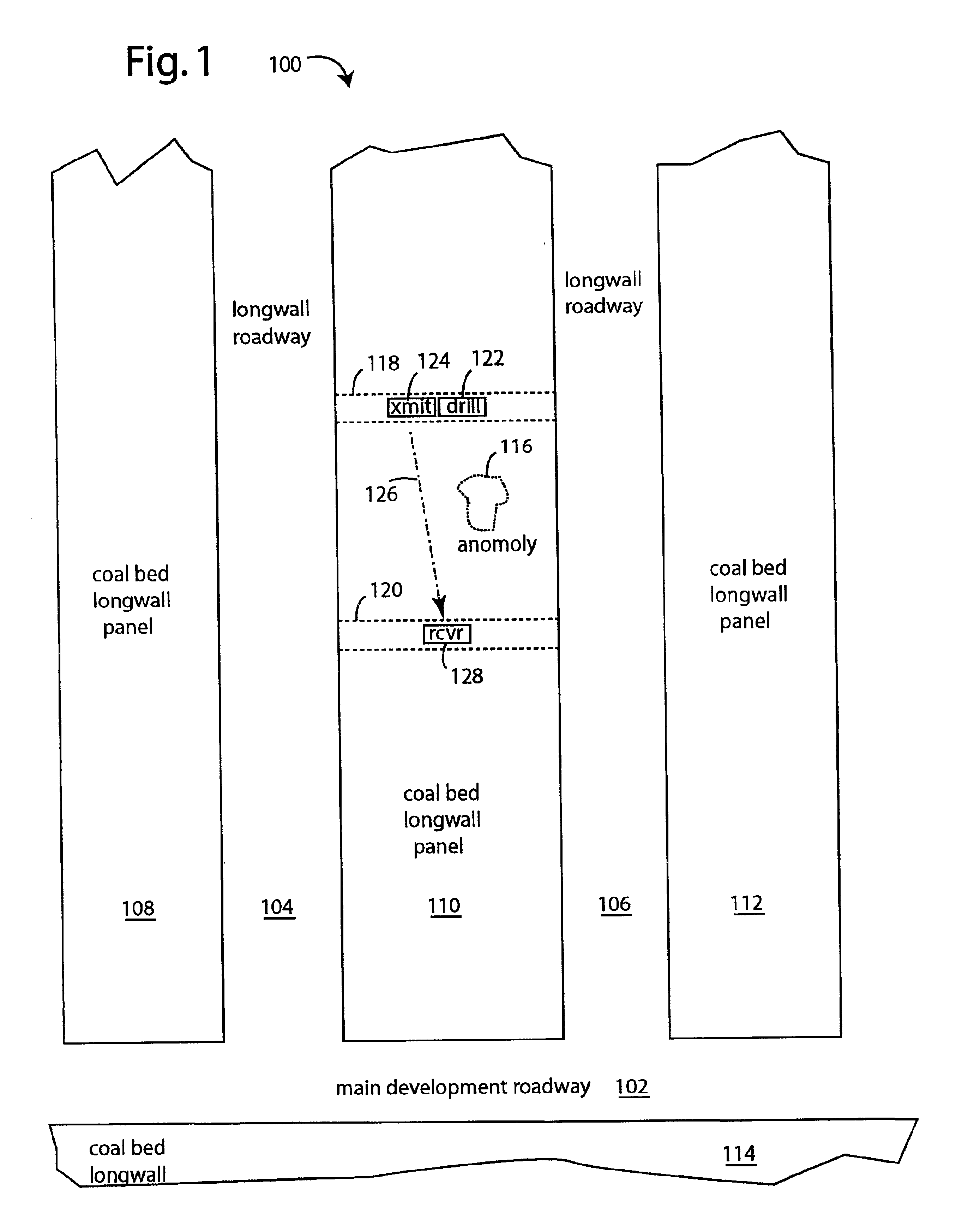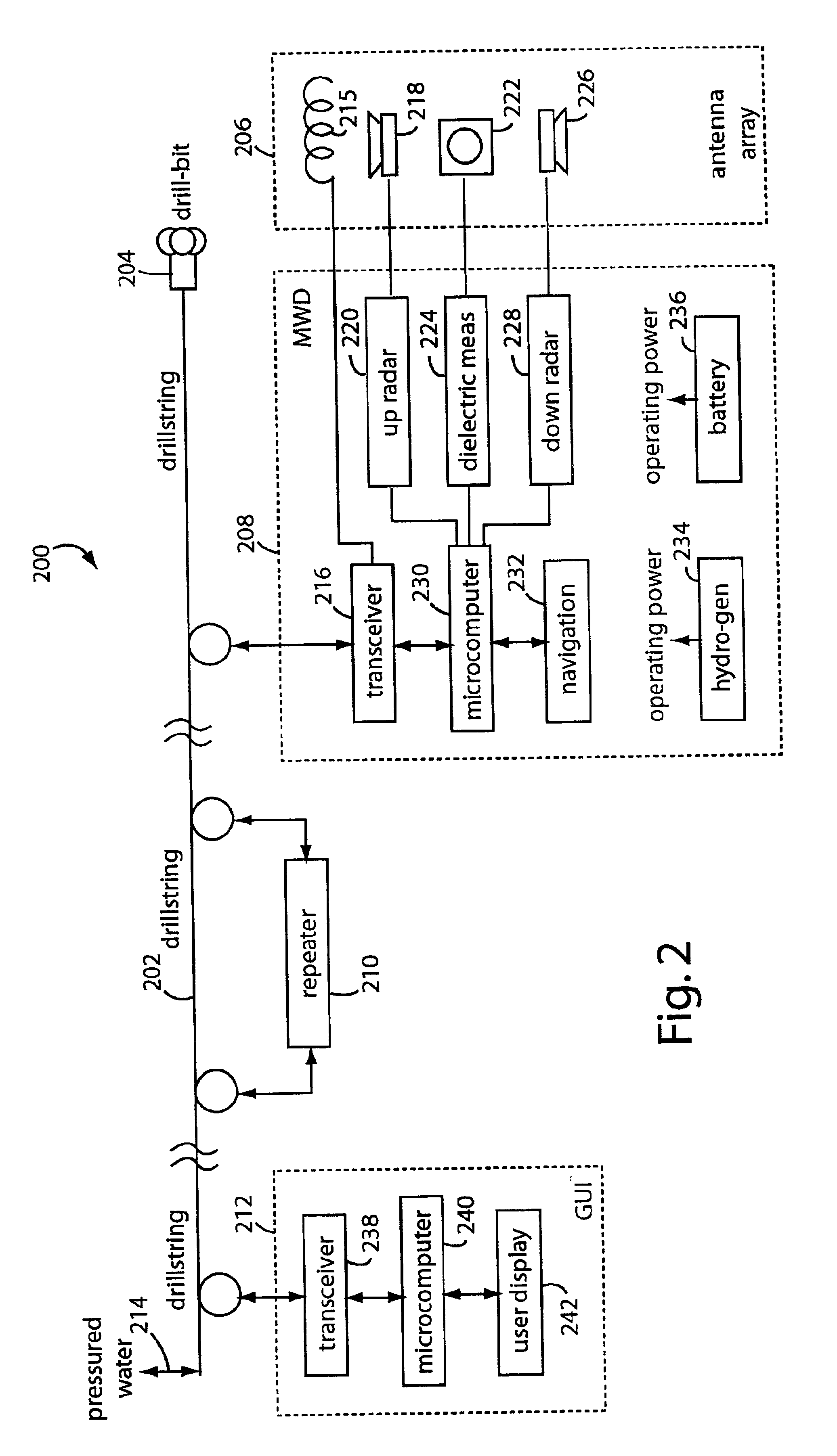Shuttle-in receiver for radio-imaging underground geologic structures
a receiver and radio-imaging technology, applied in the field of groundpenetrating radars and coal mining, can solve the problems of large water volume interference with the extraction of methane, and large cost increase of methane produced by drilling into the paleochannel
- Summary
- Abstract
- Description
- Claims
- Application Information
AI Technical Summary
Benefits of technology
Problems solved by technology
Method used
Image
Examples
Embodiment Construction
[0023]FIG. 1 represents an underground block of coal or a longwall coal mining operation 100. In a longwall operation, a main development roadway 102 has several branching longwall roadways, e.g., roadways 104 and 106. These roadways are cut between a number of coal bed longwall panels 108, 110, 112, and 114. The coal bed longwall panels 108, 110, 112, and 114, can, and usually do include anomalies, e.g., anomaly 116.
[0024]Embodiments of the present invention permit the longwall panels to be imaged with electromagnetic waves for anomalies by passing through a combined high frequency probe radio wave and a low-frequency synchronizing radio wave. In FIG. 1, these signals are passed between de-gasification boreholes 118 and 120. Alternatively, the low frequency synchronization signal can be communicated by a fiberoptic cable laid between the transmitter and receiver.
[0025]Methane is conventionally degassed from the longwall panels by boring a series of horizontal bores spaced only a fe...
PUM
 Login to View More
Login to View More Abstract
Description
Claims
Application Information
 Login to View More
Login to View More - R&D
- Intellectual Property
- Life Sciences
- Materials
- Tech Scout
- Unparalleled Data Quality
- Higher Quality Content
- 60% Fewer Hallucinations
Browse by: Latest US Patents, China's latest patents, Technical Efficacy Thesaurus, Application Domain, Technology Topic, Popular Technical Reports.
© 2025 PatSnap. All rights reserved.Legal|Privacy policy|Modern Slavery Act Transparency Statement|Sitemap|About US| Contact US: help@patsnap.com



